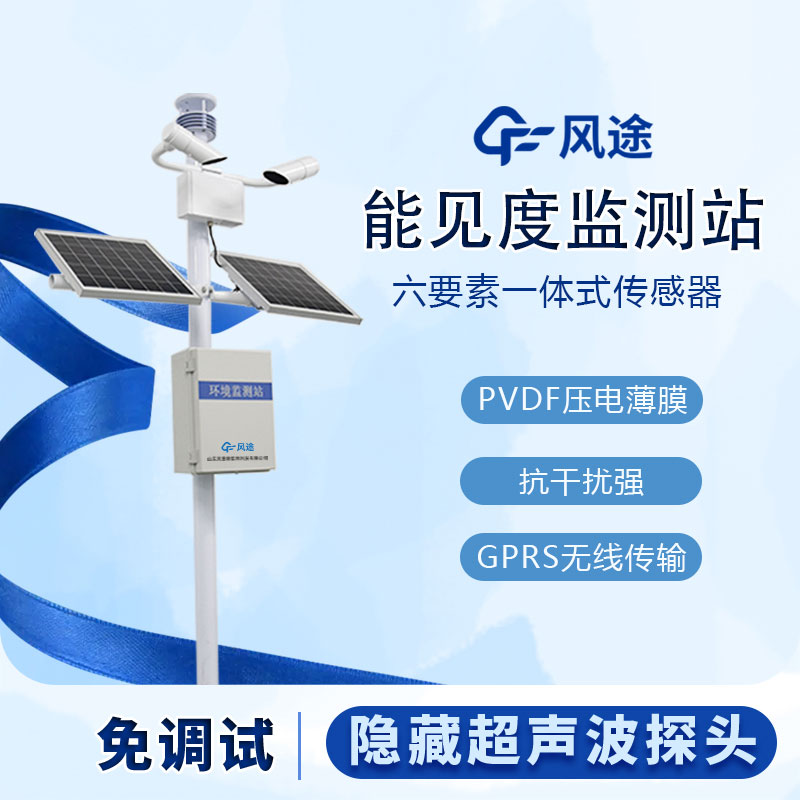Shandong Fengtu IOT Technology Co., Ltd
Sales Manager:Ms. Emily Wang
Cel,Whatsapp,Wechat:+86 15898932201
Email:info@fengtutec.com
Add:No. 155 Optoelectronic Industry Accelerator, Gaoxin District, Weifang, Shandong, China

Sales Manager:Ms. Emily Wang
Cel,Whatsapp,Wechat:+86 15898932201
Email:info@fengtutec.com
Add:No. 155 Optoelectronic Industry Accelerator, Gaoxin District, Weifang, Shandong, China
time:2023-09-15 17:05:53 source:Weather Station viewed:782 time
Diffuse visibility meters are key devices that, through the use of advanced technology and principles, can accurately measure visibility and help improve safety and operational efficiency in a variety of industries. In this article, we will introduce the working principle, advantages and applications of scattering visibility meters.
How Scattered Visibility Meters Work
Scattered visibility meters utilize the principle of scattered light to measure visibility. It determines the visibility level by emitting a light beam and measuring the intensity of the light scattered back from the surface of the target. This measurement is based on the phenomenon of scattering, where light is scattered when particulate matter or water droplets are present in the air, thus reducing visibility. Scattering visibility meters rely on precise optics and detection technology to quickly and accurately measure visibility and transmit the data to a monitoring system.
Advantages of Diffuse Visibility Meters
A scattering visibility meter has several advantages that make it a widely used device in various industries. First, it has high accuracy and sensitivity to detect subtle changes in visibility. Secondly, it has the ability to respond quickly, monitoring changes in visibility in real time and providing timely alerts and notifications. In addition, the Scatter Visibility Meter is adaptable to different weather conditions and ambient particulate matter, resulting in stable operation in a variety of industrial and transportation applications.
Application areas for scattering visibility meters
Diffuse visibility meters play an important role in many fields. In the aviation industry, it is widely used for visibility monitoring during aircraft take-off and landing to ensure flight safety. In road transportation, it provides real-time visibility data to help drivers make safe driving decisions in adverse weather conditions. In addition, scattering visibility meters are widely used in environments such as harbors, factories, mines and construction sites to improve safety and operational efficiency.
Diffuse visibility meters are advanced devices that utilize the principle of scattered light to achieve accurate measurements of visibility, providing vital safety in a variety of industries. Whether in aviation, transportation or other industrial applications, it responds quickly, operates reliably and provides users with highly accurate visibility data. If you need to improve safety and operational efficiency, the Diffuse Visibility Meter is your indispensable partner.

An automatic soil moisture monitoring station generally consists of the following components:Soil moisture sensor: It is the core component of the monitoring station and is used to detect soil moisture content and temperature. The sensors are usually installed at different depths of the soil layer i...
how does a rain gauge work? Placed in an open area, it is measured based on the height of the precipitation that has accumulated in the container at a given time, and the change in rainfall over time is recorded....
best weather stations are used to monitor wind speed, wind direction, temperature, humidity, air pressure, light, optical rainfall, pm2.5, pm10, noise, and other meteorological elements....
From ancient times to the present, agriculture has always been based on agriculture. "Food is the most important thing for the people" shows the importance of agriculture. The damage caused by meteorological disasters that we have been suffering from is also very serious. In order to ensur...